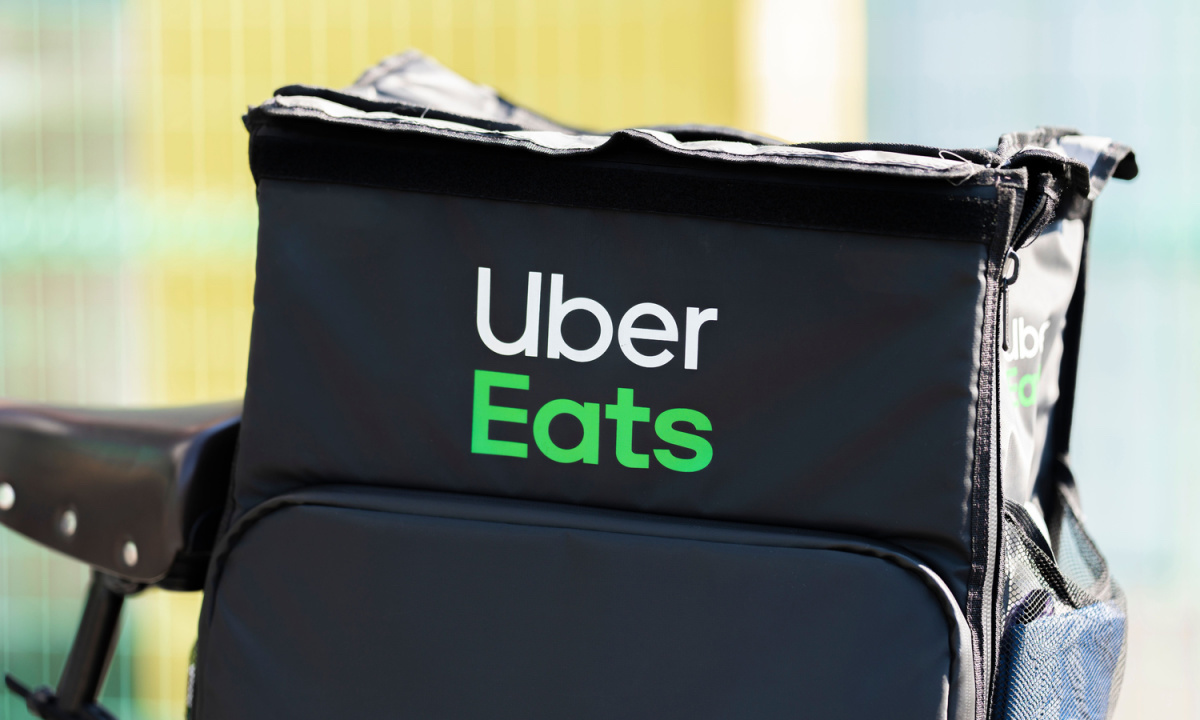
Uber is sating its hunger for growth by shaking up the grocery selection, payment and delivery model along the lines of what Instacart currently offers, but with some added features that emphasize payment simplicity and convenience.
At the company’s Go-Get event in New York City on Wednesday (May 17), the San Francisco-based rideshare leader unveiled a series of new platform features, with upgrades to the family and group grocery shopping and payment experience generating a large helping of buzz.
In a multimedia blog post that winked at “The Kardashians,” Uber CEO Dara Khosrowshahi laid out the new Group Grocery Orders feature that gives families and groups like roommates access to a shared grocery cart into which different people can place the items they each want.
Khosrowshahi wrote: “Building the perfect grocery cart for delivery with your roommates, family members or vacation buddies just got even easier. Now, group grocery orders on Uber Eats lets you invite participants to add their own items to a shared cart, set deadlines for when to add their must-haves, and even automatically split the bill at most stores for a hassle-free experience. Want to place a recurring grocery order and remind your family to get their items added each week? You can do that too.”
During on-stage remarks kicking off the expo-style event, Khosrowshahi added that a key part of the new grocery feature is avoiding “that whole awkward phase of figuring out who owes what or whether you’re going get paid back on that Venmo. We do all of it for you.”
Reporting a rebound in rideshare during Uber’s Q1 2023 earnings call on May 2, Khosrowshahi replied to an analyst’s question about adding value to the Uber One subscription service with some foreshadowing, saying, “We are introducing the native grocery experience to a much larger audience across the company. And as we have done that, we have seen the percentage of Uber Eats customers who then order from new verticals increase nicely.”
Instacart launched the Family Cart feature in 2022 as part of its Instacart+ subscription, about which Instacart Head of Product Daniel Danker said, “In addition to free delivery on orders over $35, credit back on Pickup and reduced service fees, subscribers can now share Instacart+ with another person for free, and shop together to make ordering truly effortless.”
However, unlike Uber’s new Group Grocery Orders feature, an Instacart product page notes that “Anyone with access to the family cart can choose to check out and place the order using their account payment method. However, the payment can’t currently be split between cart members.”
For its part, DoorDash began offering on-demand grocery delivery in 2020 and now counts over 100,000 non-restaurant stores across its Marketplace and Drive platforms in North America.
In February, DoorDash expanded its agreement with discount grocery chain ALDI, saying in the announcement that “Grocery orders can be placed on-demand from local ALDI stores via the DoorDash marketplace app or website. As consumers face rising prices on groceries and home essentials, DoorDash continues its commitment to delivering an unparalleled experience focused on selection and value.”
DoorDash also has a Group Order feature but does not manage payments for group orders as the new Uber Group Grocery Orders feature does.
According to the recent PYMNTS study “Changes in Grocery Shopping Habits and Perceptions,” based on a survey of more than 2,400 U.S. consumers, when it comes to ordering groceries online for delivery, “Younger shoppers were most likely to cite convenience as their primary driver, while older consumers are more likely to cite an appetite for better prices and deals. More specifically, large shares of Gen Z (45%), millennials (42%), and bridge millennials (44%) cited convenience as the most significant reason for ditching physical shopping carts for digital ones.”
The study added, “By contrast, older consumers are more likely to indicate cost-effectiveness as the primary motivator for going more digital with their grocery shopping. Thirty-eight percent of baby boomers and seniors underlined this as the top reason for using digital channels, and 36% of their Gen X counterparts said the same.”